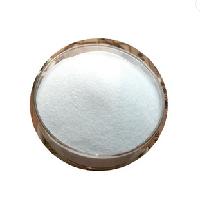-
Categories
-
Pharmaceutical Intermediates
-
Active Pharmaceutical Ingredients
-
Food Additives
- Industrial Coatings
- Agrochemicals
- Dyes and Pigments
- Surfactant
- Flavors and Fragrances
- Chemical Reagents
- Catalyst and Auxiliary
- Natural Products
- Inorganic Chemistry
-
Organic Chemistry
-
Biochemical Engineering
- Analytical Chemistry
-
Cosmetic Ingredient
- Water Treatment Chemical
-
Pharmaceutical Intermediates
Promotion
ECHEMI Mall
Wholesale
Weekly Price
Exhibition
News
-
Trade Service
.
[Sagol Center for Regenerative Biotechnology]
The researchers, led by a team in the laboratory of Dr.
Tal Dvir, Professor, Tel Aviv University, are now preparing for clinical trials in human patients
The researchers published their findings in the journal Advanced Science, titled: "Regeneration of injured spinal cord during chronic phase by engineering iPSCs-derived 3D neuronal networks
.
"
The authors note that traumatic spinal cord injury (SCI) has an immediate and catastrophic impact on all aspects of a patient's health and quality of life
.
Primary injury results in direct damage, often resulting in cell death, disruption of the blood-spinal cord barrier, and extracellular matrix (ECM) degradation
The team further noted that cell therapy using induced pluripotent stem cell-derived neurons is considered a promising approach to regenerate injured spinal cords
.
"However, scar formation during the chronic phase is not a permissive microenvironment for cell or biomaterial transplantation or tissue assembly
"Our technique is based on taking a small slice from a patient's abdominal fat tissue," Dvir said
.
This tissue, like all tissue in our body, is made up of cells and the ECM (made up of things like collagen and sugars)
The resulting human spinal cord implants were tested in a paralyzed mouse laboratory model
.
As a proof of concept, the researchers successfully tested the implant for the first time in a mouse model of acute injury and prolonged paralysis
They also tested the implant on mouse models of chronic or long-term injury and paralysis, the equivalent of a year in humans
.
The authors state: "After demonstrating the ability of the implants to restore the injured spinal cord during the acute phase, we went on to evaluate their ability to regenerate tissue in a more clinically relevant model
.
At this stage, the scar is fully developed and spontaneous recovery of behavior reaches The plateau phase was reached
.
" The results confirmed that 100% of the acute paralysis model and 80% of the chronic paralysis model regained the ability to walk after implantation
.
"These model animals undergo a rapid recovery process and eventually they can walk well.
.
.
Millions of people around the world are paralyzed due to spinal cord injuries for which there is still no effective treatment
.
People injured at a very young age are doomed To spend the rest of your life in a wheelchair, bearing all the social, economic and health costs
of paralysis.
Our goal is to produce individualized spinal cord implants for each paralyzed person, allowing the regeneration of damaged tissue without rejection risk of reaction
.
”
.
[Sagol Center for Regenerative Biotechnology]
In their published paper, the authors conclude: "Going forward, after overcoming stringent regulatory challenges, the reported technique may be relevant for the treatment of paralyzed human patients
.
In this concept, a small biopsy is obtained by taking a small piece of the patient.
tissue, it is possible to produce personalized hydrogels and generate patient-specific iPSCs to obtain personalized SC implants
that can replace excised scar tissue and reconnect injured human SCs, potentially represents a new approach to personalized cell therapy
.
"
Dvir has partnered with industry partners to form Matricelf, which is applying this approach with the goal of enabling spinal cord implant therapy for paralyzed patients
.
"The company's preclinical program has been discussed with the FDA," Dvir said
.
"Now that we've presented an advanced technology in regenerative medicine, and there are currently no other alternatives for paralyzed patients, we have every reason to expect our technology to be approved relatively quickly
.
Regenerating the injured spinal cord at the chronic phase by engineered iPSCs-derived 3D neuronal networks







